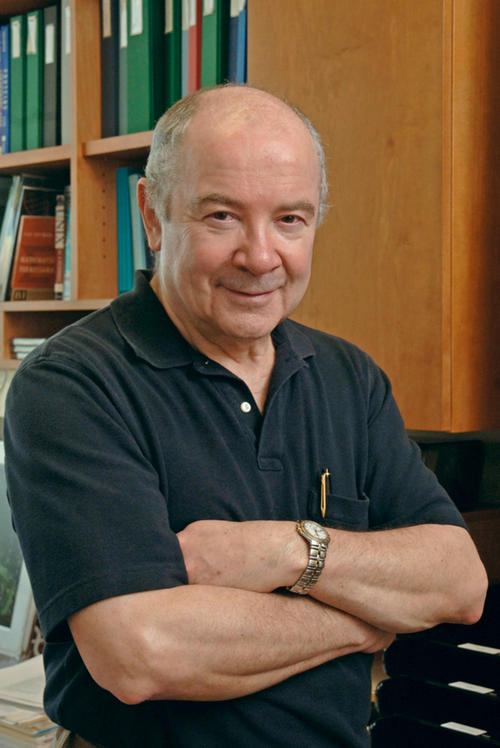9th Einstein Lecture Dahlem: Johann Deisenhofer
Understanding the main Components of Life
May 04, 2009
Der mit dem Nobelpreis für Chemie des Jahres 1988 ausgezeichnete Experimentalphysiker Professor Johann Deisenhofer hielt die erste Einstein Lecture 2009 an der Freien Universität Berlin.
Image Credit: privat
The 9th Einstein Lecture Dahlem on May 4, 2009, focusses on the elements of life: Proteins and Nucleic Acids (DNA and RNA) are biopolymers and the main components of all living beings. They are comprised of elements like amino acids (proteins) and nucleotides (DNA and RNA) and take on a well-defined three-dimensional structure in their natural environment as well as in a test tube.
These structures are determined by the sequence of the elements and their interactions with the environment, and they are decisive for the functioning of the molecules, e.g. either as enzyme or components of signaling chains. The first protein structures of hemoglobin and myoglobin were determined more than 50 years ago. Preparing the ground for these successes took decades. Since then, technical progress and continued development of new methods have made it possible to determine such structures within a few days or even hours. Hence, the structural information has become a main component of the revolution in biochemistry and molecular biology during the past 50 years.
However, many challenges remain, above all the so-called “folding problem”, i.e. the prediction of the structure based on the sequence of the elements. Even though all underlying natural laws are apparently known and taken into consideration it has turned out to be extremely difficult to find a reliable pathway through the complexity of the interactions of molecules.
Johann Deisenhofer, born 1943 in Zusamaltheim, Bavaria, studied physics at Technical University of Munich. He completed his diploma in 1971 and his PhD in experimental physics in 1974. He wrote his thesis on protein crystallography at Max Planck Institute of Biochemistry (MPIB) in Martinsried near Munich. As a postdoc and research assistant he continued working at the MPIB department of structural research. He then worked in several structural projects, among them the structure determination of a bacterial photosynthetic reaction center in cooperation with Hartmut Michel.
In 1988, Deisenhofer accepted an appointment as professor of biochemistry at the University of Texas at Dallas Southwestern Medical Center and investigator at Howard Huges Medical Institute. For his work on the photosynthetic reaction center he was awarded the Biological Physics Prize of the American Physical Society (1986, with H. Michel), the Otto Bayer Preis (1988, with H. Michel) and the Nobel Prize in Chemistry (1988, with H. Michel and R. Huber). He is a member of numerous scientific organisations including the Leopoldina (German National Academy of Sciences), the National Academy of Sciences of the USA and the Academy for Medicine, Engineering, and Science in Texas.

